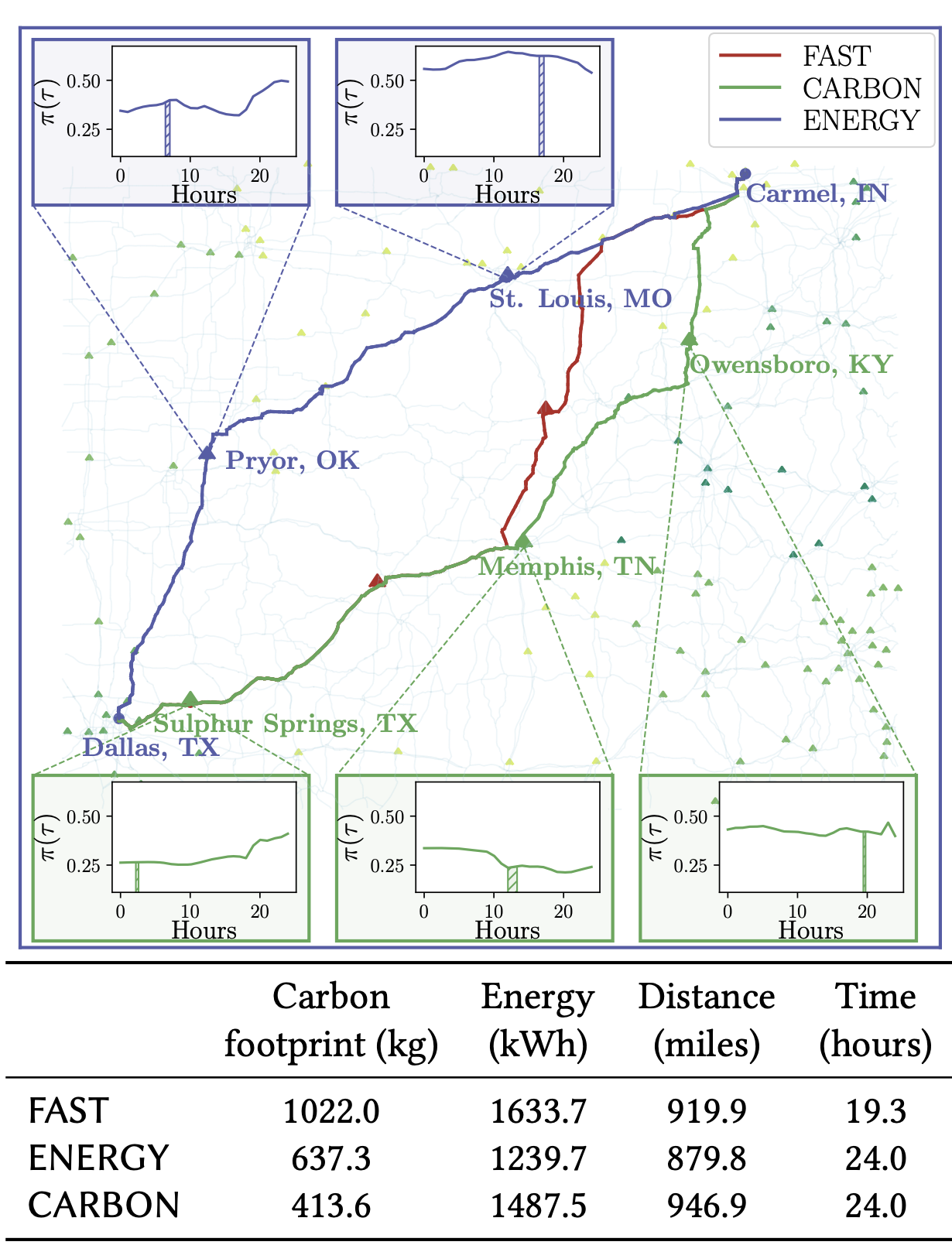
We study the carbon footprint optimization (CFO) of a heavy-duty e-truck traveling from an origin to a destination across a national highway network subject to a hard deadline, by optimizing path planning, speed planning, and intermediary charging planning. Such a CFO problem is essential for carbon-friendly e-truck operations. However, it is notoriously challenging to solve due to (i) the hard deadline constraint, (ii) positive battery state-of-charge constraints, (iii) non-convex carbon footprint objective, and (iv) enormous geographical and temporal charging options with diverse carbon intensity. Indeed, we show that the CFO problem is NP-hard. As a key contribution, we show that under practical settings it is equivalent to finding a generalized restricted shortest path on a stage-expanded graph, which extends the original transportation graph to model charging options. Compared to alternative approaches, our formulation incurs low model complexity and reveals a problem structure useful for algorithm design. We exploit the insights to develop an efficient dual-subgradient algorithm that always converges. As another major contribution, we prove that (i) each iteration only incurs polynomial-time complexity, albeit it requires solving an integer charging planning problem optimally, and (ii) the algorithm generates optimal results if a condition is met and solutions with bounded optimality loss otherwise. Extensive simulations based on real-world traces show that our scheme reduces up to 28% carbon footprint compared to baseline alternatives. The results also demonstrate that e-truck reduces 56% carbon footprint than internal combustion engine trucks.

@inproceedings{su2023follow,
author = {Su, Junyan and Lin, Qiulin and Chen, Minghua},
title = {Follow the Sun and Go with the Wind: Carbon Footprint Optimized Timely E-Truck Transportation},
year = {2023},
booktitle = {Proceedings of the 14th ACM International Conference on Future Energy Systems},
pages = {159–171},
numpages = {13},
location = {Orlando, FL, USA},
series = {e-Energy '23}
}